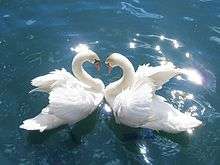Amalananda
| Amalananda | |
|---|---|
| Religion | Hinduism |
| Philosophy | Author of Vedanta Kalpatarū which is a commentary on Vācaspati Miśra’s Bhāmatī |
| Known for | Indian philosopher |
| Personal | |
| Born | India |
| Part of a series on |
| Advaita |
|---|
 |
|
Schools |
|
Concepts Classical Advaita vedanta
Kashmir Shaivism |
|
Texts Advaita Vedanta
Kashmir Shaivism Inchegeri Sampradaya |
|
Teachers Classical Advaita Vedanta
Modern Advaita Vedanta
Shaivism/Tantra/Nath Neo-Advaita Other |
|
Influences Hinduism Buddhism |
|
Monasteries and Orders Classical Advaita Vedanta
Modern Advaita Vedanta Neo-Vedanta |
|
Scholarship |
|
Categories
|
| Part of a series on | ||
| Hindu philosophy | ||
|---|---|---|
 | ||
| Orthodox | ||
|
|
||
| Heterodox | ||
|
|
||
|
||
Amalananda was a South Indian Sanskrit scholar who lived during the reign of Mahadeva, the Yadava ruler of Devagiri who ruled from 1260 to 1271. Not much is known about his life and background. Anubhavānanda is believed to have been his preceptor.
Amalānanda wrote Vedānta Kalpatarū sometime before 1297. This book is a commentary on Bhāmatī of Vācaspati Miśra which text in its own turn is a commentary on Sankara’s commentary on the Brahma Sutras of Badarayana. His other works are – Śastra-darpana which is explanations of the Brahma Sutras, and Pancapādikā-darpana which is a commentary on Padmapādācārya’s Pancapādika. The language of these works is chaste and the thought-content is serious.[1] Vācaspati Miśra, the author of Bhāmatī lived around 841. Appayya Dikshita (1520-1593), son of Rangarājādhvarindra of Kānci, and a prolific writer, wrote his Kalpataruparimala, a commentary on Amalānanda’s Vedanta-Kalpataru.[2][3]
Sankara explains Yadrecchāvadā, referred to by the Shvetashvatara Upanishad, as the doctrine of accidental effects which are due to chance; Amalānanda explains it as the doctrine that effects are produced at any time depending on definite causes. The same Upanishad mentions nature (svabhava) as the cause of the world. Sankara explains it as the natural powers inherent in different things. Amalānanda explains nature as that which exists so long as things exists e.g. breathing as the nature of the living body exists so long as the body exists.[4]
References
- ↑ Ganga Ram Garg. Encyclopaedia of the Hindu World. Concept Publishing Company. p. 357.
- ↑ Surendranath Dasgupta. History of Indian Philosophy. Motilal Banarsidass. p. 418.
- ↑ Amresh Datta. Encyclopaedia of Undian Literature Vol.1. Sahitya Akademi. pp. 217–218.
- ↑ Jadunath Sinha. Outlines of Indian Philosophy. Pilgrim Books. pp. 61, 62.